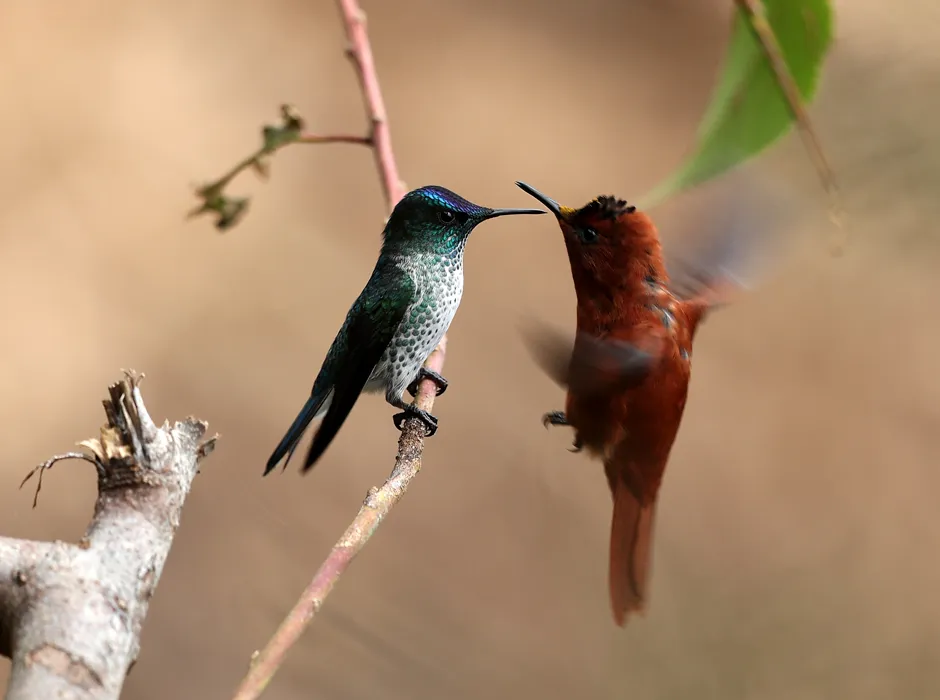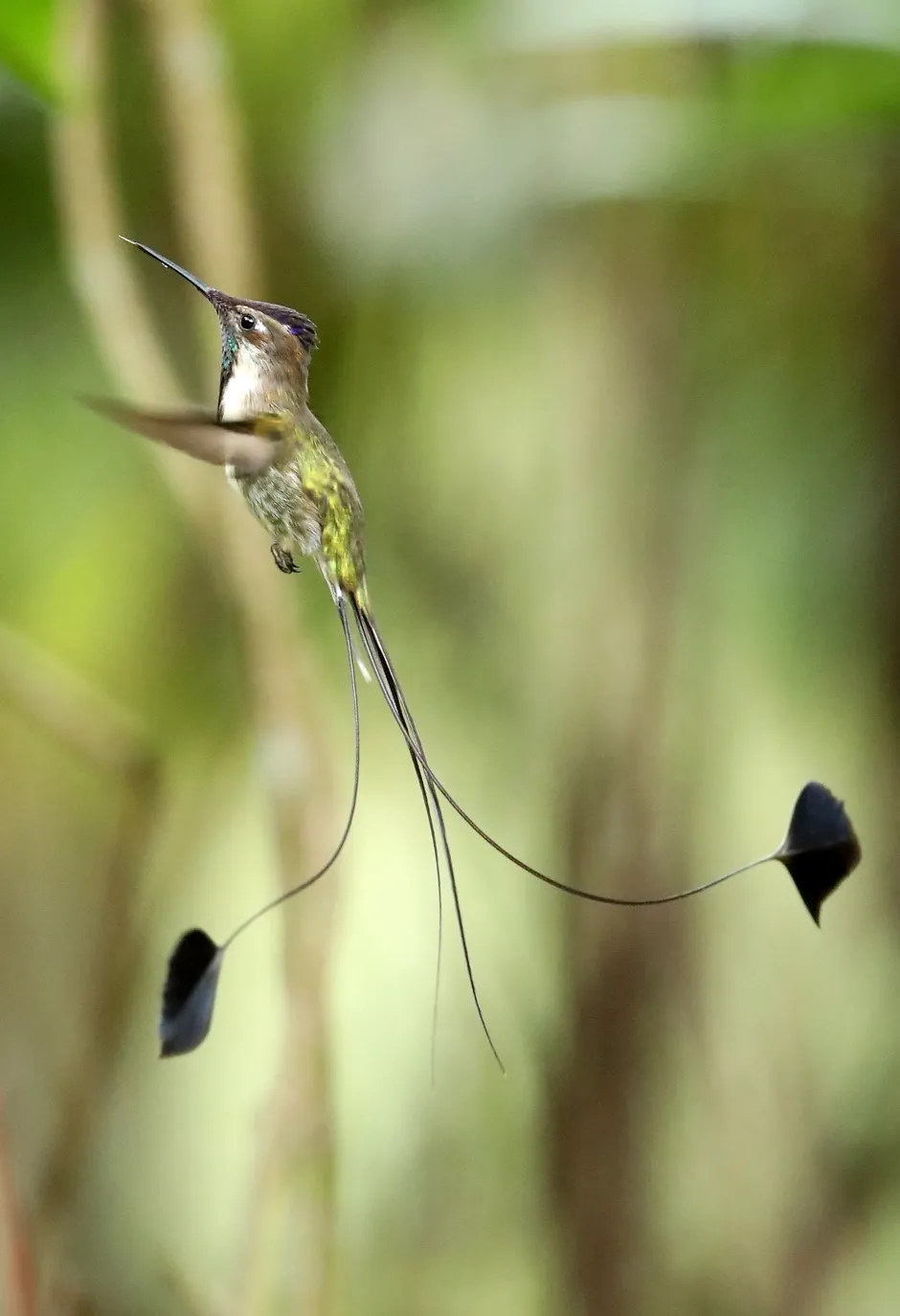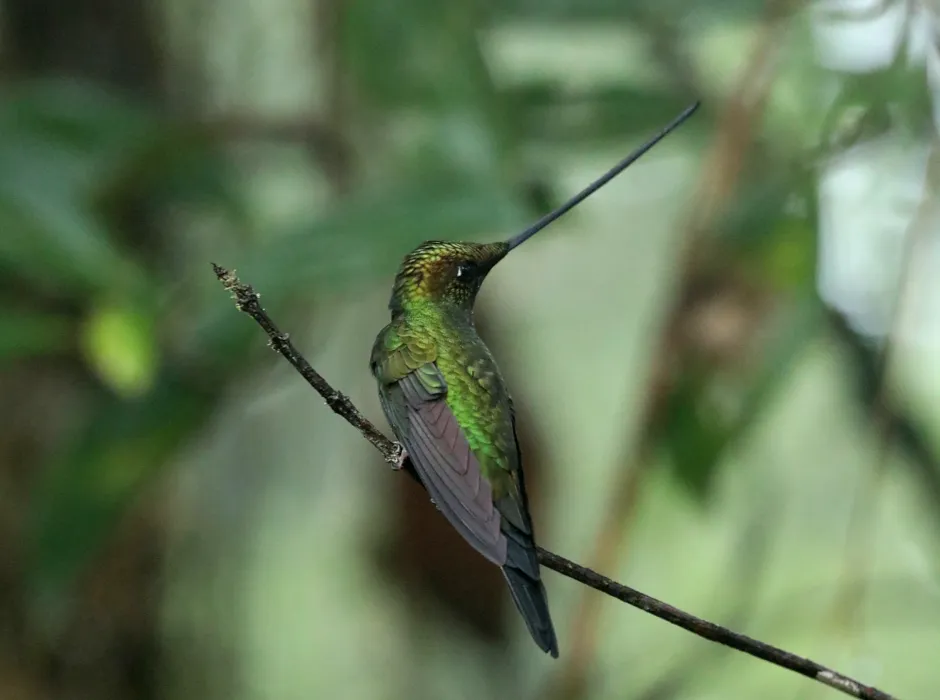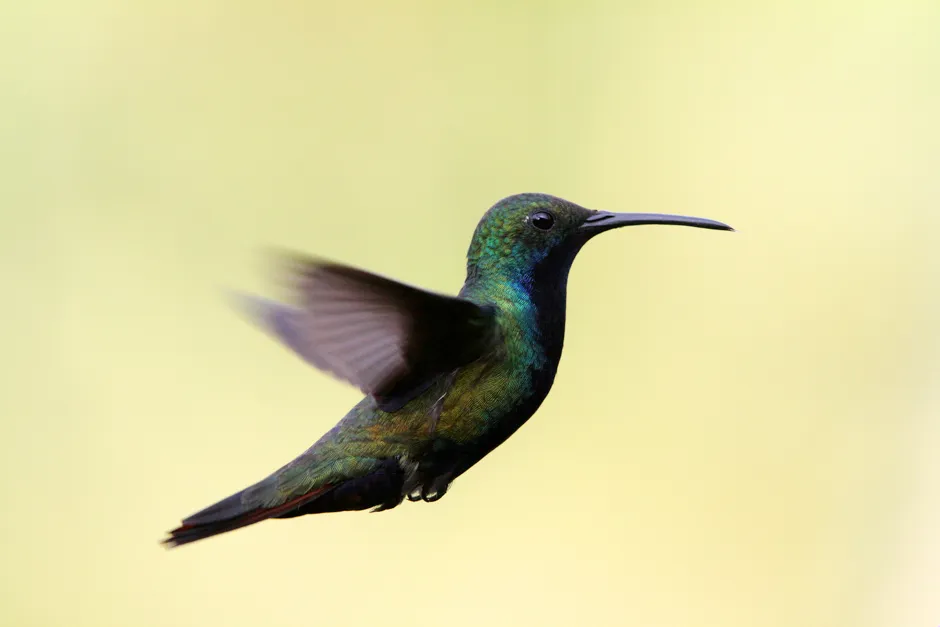In 2004, Gerald Mayr, a palaeontologist at the Senckenberg Research Institute in Germany, found himself confronted by two fossilised birds found in rocks in Fraunweiler, a village in southern Germany.
Any fossilised bird is a thing of wonder, a window into a long-lost past when flight, leaving the bounds of the Earth, was still a relatively new innovation in the vertebrate world. But these birds on Mayr’s workbench were something more remarkable still…
The birds were small – just four centimetres long, with bills two and half times the length of their skulls, and wing bones that looked just like the short, stocky humerus typical of modern-day hummingbirds. Mayr recognised them as just that, early hummingbirds, albeit ones found an ocean away from the family’s present global range in the Americas.
South American hummingbird fossils found to date are relative youngsters, dating to just one million years ago – these fossils, and subsequent examples unearthed in Germany, Poland and France, are those ancient hummingbirds’ ancestors. Mayr duly named the Fraunweiler hummingbirds Eurotrochilus inexpectatus, or ‘unexpected European hummingbird’.

Anyone whose path has crossed that of a hummingbird cannot help but be struck by their hovering flight – their very name, hummingbird, is defined by it. Beating their wings between 50 and 200 times per second, their flight through the air is so fast it becomes audible to us as a sonorous hum.
No other family of birds come even close to this frequency of wingbeats. Some other birds can hover, with varying degrees of success, but none have the aerial mastery of the hummingbirds, capable even of backwards flight.
They are a pinnacle of evolution, their flight powered by pectoral or breast muscles that account for almost a third of their body weight – this is twice the pectoral muscle mass of most other birds - and hearts that beat up to 1,200 times per minute. To put that in to context: our human hearts average a mere 80 beats per minute.

Hummingbirds' flight as a whole, and their wing rotation specifically, is made possible by skeletal differences that mark them out from almost all other birds.
Their sternum, or breast bone, is considerably larger than those of other birds, providing anchorage for their large pectoral muscles. Moreover, their wings are attached to the sternum with a tiny ball and socket type joint – unique to them and their distant cousins, the swifts – which allows their wings to achieve an extraordinarily efficient rotational movement. Hummingbirds, by rotating their wings, gain 25 per cent of their lift from the upbeat in addition to the balance of lift generated by the conventional downbeat.
To keep up with their bodies' demands, hummingbirds fuel themselves with a high-octane, calorific diet that comprises mostly nectar they drink from flowers – though they do eat some small insects for protein and roughage. Were we to have the same fast metabolism as a hummingbird, we would need to consume around 155,000 calories a day.
How the hummingbird learnt to hover

But to understand how their distinctive hovering flight came to be, we need to follow the path of Gerald Mayr’s fossilised hummingbirds further millions of years back into the Cretaceous period, a warm period of rampant biological diversification some 66-145 million years ago.
At some point in the early Cretaceous period, flowers started to evolve scents and colours to signal the presence of pollen to passing insects. These insects, visiting many flowers, would inadvertently pollinate them. In time, flowers added nectar to the mix, giving insects an additional inducement to visit them – and simultaneously, these insects evolved the necessary equipment necessary to first find the flowers and then to extract pollen and nectar alike.
These coevolutionary interactions inadvertently provided the fuel for a much larger organism, those early hummingbird ancestors, to evolve in their own right to exploit this rich food source.
Read more about bird evolution:
- Madagascan fossil 'turns bird evolutionary anatomy on its head'
- Meet 'Wonderchicken', the oldest known fossil of a modern bird
To extract nectar from flowers, some birds evolved to hover, like a hawkmoth, in front of the flowers so they could readily dip their tongues into the nectar within. This involved a biomechanical innovation previously unthinkable amongst invertebrates, achieved by rotating their wings in flight, giving uplift on both the upstroke as well as the downstroke of each wingbeat.
Further innovations have helped them to capitalise upon the fruits of their hovering labours: hummingbird tongues are a wonder in themselves, capable of passively trapping nectar within themselves every time they are immersed in a flower; while other hummingbirds have evolved to sport bills that are shaped specially to enable them to access the depths of particular flowers.

Sword-billed hummingbirds, with a bill longer than their own bodies, can drink from deep flowers with long corollas that deny access to all other hummingbirds, while sicklebills have grotesquely curved bills that fit the waxy flowers of heliconias like a key in a lock.
There are 361 species of these remarkable birds, each with their own story: the bee hummingbird in Cuba is the smallest species of bird to have ever lived; the tiny rufous hummingbird migrates over 3,000 miles each year; and, marooned on the remote Pacific island that inspired Robinson Crusoe, is the critically endangered Juan Fernández firecrown. It's not hard to understand why humans have long been obsessed with hummingbirds.

Jon Dunn's new book, The Glitter in the Green: In Search of Hummingbirds (£20, Bloomsbury) is out now.
- Buy now from Amazon UK, Bookshop.org and Waterstones